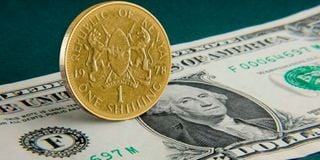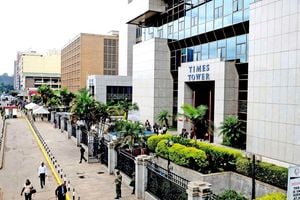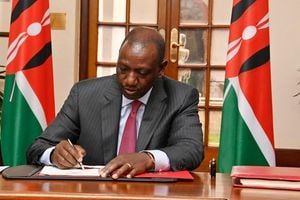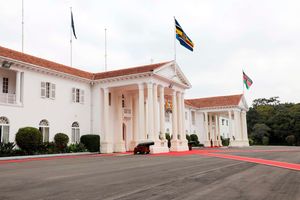
The Kenyan shilling posted its strongest intra-day gain against the US dollar in 12 years on February 14.
Contrary to what Kenya Kwanza heavies may think or how they spin it, no one wanted or wants Kenya to default on her debts. But in what is an established trend in the bottom-up brand of economic management, the regime has yet again raised expensive debt to pay off maturing, cheaper debt. This ruinous approach will certainly bring grief down the line. Default may have been averted today, for the certainty that it will occur tomorrow.
The structurers of the recent Eurobond amortized it over three years – 2029, 2030 and 2031, in equal instalments. This is to lessen the weight on cash flow that a single bullet payment creates. Indeed, experienced Treasury mandarins have always been nervous of bullet payments, preferring a sinking fund arrangement.
The interest rate on the new bond is 10.375%. The 2014 Eurobond that is being paid off was priced at 6.875% and was for 10 years. The current version is 3.5 percentage points more expensive. The regime traded cheaper debt for more expensive.
The spin has been that the successful issue is a vote of confidence in the regime’s economic management. Quite the opposite. If you are willing to pay high interest rates, you can always raise money. The reason the market demands a high rate is because they have low confidence in the issuer.
A number of countries have been down this road, and defaulted. Ghana, Ecuador, Mozambique, Venezuela, Suriname and Lebanon. In fact, six out of 15 countries that have, in the last ten years, issued debt priced above 9.5 per cent have defaulted.
It is a gamble that many of us have faced at personal level. You are struggling with a business loan. The bank is threatening to foreclose. You take a bet, pick up an expensive, but easily available loan, from the shylock, and settle the bank. You are hoping the business improves quickly before the shylock’s loan is due!
The silver lining is that the bond has halted the freefall of the shilling against the dollar, the exchange rate improving marginally to 156 shillings to the US dollar.
The regime will say they inherited this problem. That may well be so. But the solution is of their own making. Had Kenya’s credit rating been improving, the pricing would have been lower. Had the regime tamed its expenditure appetite, the borrowing would have been less or avoided altogether.
The regime will no doubt also argue that they are not the first to switch debt. And they will invoke President Kibaki as they often like to. And yes, Kibaki did switch debt. But he did it the right way. He switched expensive, with cheaper debt. He also switched short term with debt of longer maturities. This re-profiling of the debt created a proper yield curve.
A yield curve is a graph showing the interest rate (yield) of debt instruments against their term, usually in years. In an economy working properly, short term maturities have lower yields. Basically, if you are going to leave your money in an investment for a longer period of time, you should be compensated more. A proper yield curve, coupled with low interest rates unleashed investments by the private sector. So serious was Kibaki with proper economic management that when the then Central Bank governor followed IMF prescription and raised interest rates, his goose was cooked. The IMF argued that a low interest rate policy was likely to fuel inflation. Kibaki knew better. Frequently enough, many countries go through periods of negative real interest rates.
In the bottom-up type of economic management, short term investments yield higher returns. And you have seen it in the government securities market. All investors are now at the short end.
To try and attract investors to instruments longer maturities, the regime has to offer even higher rates. That is why the tax-free infrastructure bonds are yielding 18.75 per cent. This is equivalent to 22 per cent on a taxable basis. That is why the new euro bond is 3.5 per cent more expensive. That will cost 11 billion shillings more in interest to be paid. It is also for seven years replacing one of ten years.
As far as investments go, government is regarded as having the least risk. This is because a government can print money. In addition, it is perpetual. Further, it can tax, and use force and law to enforce taxation.
A private business can do none of these things. In antiquity, The East Indian Company and similar were on royal charter that purportedly gave them taxation and governing powers. Some of today’s most powerful companies, while not having quite the same kind of power, can dictate price.
If the sovereign is paying 22 per cent on a loan, what can a small business be expected to pay?
Throughout the 18 months of this regime, it has switched cheaper debt with more expensive debt on the domestic front.
Between September 2022 and September 2023, public debt stock has grown by Sh1.82 trillion (or about 20 per cent). External debt has increased by Sh1.033 trillion while domestic debt increased by Sh490 billion.
The consequence is obvious and direct. Debt service – that is both interest and principal payments - will amount to Sh1.87 trillion in the 2023/24 financial year. Domestic debt servicing cost, at Sh1.03 trillion is higher, accounting for 55 per cent. This, the result of higher domestic interest rates.
External debt servicing expenditure is about 839.14 billion shillings. And when the shilling was in free fall, this was rising higher still. This, as well as the IMF loan, may have prompted the Central Bank to finally join the fray to defend the shilling.
@NdirituMuriithi is an economist










